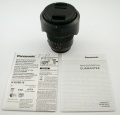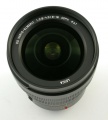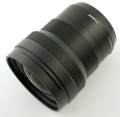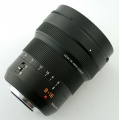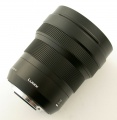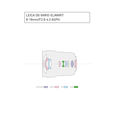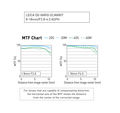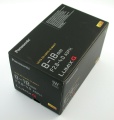LEICA DG VARIO-ELMARIT 1:2.8-4.0/8-18 ASPH.: Unterschied zwischen den Versionen
K (Bilder, Links und Text eingefügt) |
K (Bilder eingefügt) |
||
| Zeile 57: | Zeile 57: | ||
Bild:Leica_mFT_8-18_Brell_7.jpg|[[Leica|LEICA]] DG VARIO-ELMARIT 1:2.8-4.0/8-18 ASPH. - mit freundlicher Genehmigung von [http://www.foto-fina.de Foto Brell, Frankfurt] | Bild:Leica_mFT_8-18_Brell_7.jpg|[[Leica|LEICA]] DG VARIO-ELMARIT 1:2.8-4.0/8-18 ASPH. - mit freundlicher Genehmigung von [http://www.foto-fina.de Foto Brell, Frankfurt] | ||
Bild:Leica_mFT_8-18_Panasonic_4.jpg|[[Linse]]nschnitt des [[Leica|LEICA]] DG VARIO-ELMARIT 1:2.8-4.0/8-18 ASPH. - mit freundlicher Genehmigung von [http://www.panasonic.com/de panasonic.de] | Bild:Leica_mFT_8-18_Panasonic_4.jpg|[[Linse]]nschnitt des [[Leica|LEICA]] DG VARIO-ELMARIT 1:2.8-4.0/8-18 ASPH. - mit freundlicher Genehmigung von [http://www.panasonic.com/de panasonic.de] | ||
| − | Bild:Leica_mFT_8-18_Panasonic_5.jpg|MTF-Chart des [[Leica|LEICA]] DG VARIO-ELMARIT 1:2.8-4.0/8-18 ASPH. - mit freundlicher Genehmigung von [http://www.panasonic.com/de | + | Bild:Leica_mFT_8-18_Panasonic_5.jpg|MTF-Chart des [[Leica|LEICA]] DG VARIO-ELMARIT 1:2.8-4.0/8-18 ASPH. - mit freundlicher Genehmigung von [http://www.panasonic.com/de] |
| + | Bild:Leica_mFT_8-18_Brell_8.jpg|OVP des [[Leica|LEICA]] DG VARIO-ELMARIT 1:2.8-4.0/8-18 ASPH. - mit freundlicher Genehmigung von [http://www.foto-fina.de Foto Brell, Frankfurt] | ||
| + | Bild:Leica_mFT_8-18_Brell_9.jpg|OVP des [[Leica|LEICA]] DG VARIO-ELMARIT 1:2.8-4.0/8-18 ASPH. - mit freundlicher Genehmigung von [http://www.foto-fina.de Foto Brell, Frankfurt] | ||
</gallery> | </gallery> | ||
== Tests und Bewertungen == | == Tests und Bewertungen == | ||
Version vom 16. Mai 2022, 18:52 Uhr
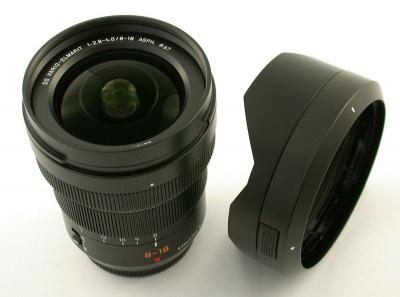
Beschreibung
Ein Zoomobjektiv von Panasonic für die Pen-Kameras (MFT). Es wurde im April 2017 vorgestellt.
Vergleichbar einem 16-36 mm-Objektiv im Kleinbildformat ist es ein Vertreter der Weitwinkel-Zoomobjektive.
Wie viele der "Leica-Linsen" von Panasonic hat das LEICA DG VARIO-ELMARIT 1:2.8-4.0/8-18 ASPH. einen Blendenring, der aber (wichtig) nur mit Kameras von Panasonic funktioniert. Das Objektiv ist gegen Staub und Spritzwasser geschützt.
Falls man als Nutzer gerne Filter benutzt, kann das Objektiv eine gute Alternative zum Olympus M.ZUIKO DIGITAL ED 7-14mm 1:2.8 PRO sein, da es ein "normales" Filtergewinde besitzt.
Panasonic-Code: H-E08018
Zitate
Aus dem Pressetext von Panasonic Deutschland:
- "Dieses neue Zoom der Leica DG Vario-Elmarit F2,8-4,0-Serie bietet einen für Foto- und Videoaufnahmen sehr dynamischen Brennweitenbereich vom 16mm-Superweitwinkel bis zu 36mm. Damit empfiehlt es sich für Landschaften und Architekturaufnahmen ebenso wie für die anspruchsvolle Available-Light-Fotografie.
Wie bei allen Objektiven der neuen Reihe kommt die Nano-Oberflächenvergütung von Panasonic zum Einsatz, um eventuelle Reflexe und Geisterbilder zu unterdrücken. Die Objektive der neuen Serie zeichnen sich außerdem durch eine robuste, metallene, staub- und spritzwassergeschützte Konstruktion aus und sind frostsicher bis -10 Grad Celsius. So halten sie einem professionellen Einsatz auch unter rauen Bedingungen stand.
Das neue, von Leica zertifizierte Objektiv steht für höchste Auflösung und geringste Verzeichnung. Die Konstruktion des Objektivs umfasst 15 Linsen in 10 Gruppen, darunter eine asphärische ED-Linse, drei asphärische und zwei ED-Linsen, sowie eine UHR-Linse, die sphärische Verzeichnung und chromatische Aberration wirkungsvoll unterdrücken und so für eine hervorragende Bildqualität bis an den Bildrand sorgen.
Dank der kompakten Bauweise geht der Einsatz des neuen Objektivs nicht zu Lasten der Mobilität des Fotografen. Trotz des großen Weitwinkels bietet das Objektiv die Anbringung von 67mm-Filtern zum Schutz oder zur Erweiterung der Aufnahmemöglichkeiten.
Das neue Objektiv empfiehlt sich zudem auch für Videoaufnahmen. Der Fokusmotor ist kompatibel zum Highspeed-Präzisions-Kontrast-AF-System der aktuellen LUMIX G Kameras mit einem Datenaustausch entsprechend maximal 240 Bildern pro Sekunde. Er trägt zudem auch zu einer gleichmäßigen Fokussierbewegung bei. Die Innenfokussierung arbeitet dabei besonders leise. Hinzu kommt eine außergewöhnlich stabile Linsenführung beim Zoomen. Sie sorgt zusätzlich für ein ruhiges Videobild. Darüber hinaus wird auch die Sicherheit der AF-Tracking-Funktion beim Zoomen dank der Highspeed-Einzelbildanalyse bei der Fokuskontrolle verbessert."
Ein Zitat aus "Panasonic 8-18 2,8-4,0" bei pen-and-tell.de:
- "Mir fällt kaum was ein, was ich daran nicht gut finde."...."Eigentlich hatte ich beim Fenster rechts oben mit lila Kanten gerechnet – nichts. Auch nicht im RAW. Die Schärfe ist tadellos."...."Schräge Kontrastkanten in den Ecken. das sollte eigentlich CAs provozieren. Offenblende. Nichts."...."Auch nicht im RAW. Dadurch, dass die Kamersoftware keine CAs korrigieren muss, ist die Schärfe und Detaildurchzeichnung außerordentlich. Und auch hier: die Schärfe stammt nicht aus dem Bildprozessor, sondern wird tatsächlich vom Objektiv geliefert."
Ein Zitat aus dem Testbericht in digitalkamera.de:
- "Während Panasonic die Verzeichnung, Randabdunklung und die Gegenlichtempfindlichkeit, teilweise mit Hilfe elektronischer Kompensation, vollends im Griff hat, sieht es bei den Farbsäumen und der Randauflösung etwas anders aus. Man muss schon etwas abblenden, damit der Bildrand nicht 30 Prozent weniger auflöst als das Bildzentrum."
Ein Zitat aus dem Review in lenstip.com:
- "It is also characterized by an excellent image quality in the frame centre and a very good correction of the majority of optical aberrations. If only the image quality on the edge was a bit better and the price a tad lower, you would have an ideal instrument. The lens, like the majority of products with the ‘Leica’ label on them, is, in our humble opinion, rather overpriced...."
Ein Zitat aus dem Review bei mingthein.com:
- "Perhaps the only complain I have about this Panasonic 8-18mm F2.8-4 lens, is how incredibly susceptible to flare it is. I am not sure what kind of nano coating they have applied but I am consistently getting ugly flares and ghostings in my frames whenever I point the lens toward bright source of light."
Ein Zitat aus dem Vergleich des Olympus M.ZUIKO DIGITAL ED 7-14mm 1:2.8 PRO und des LEICA DG VARIO-ELMARIT 1:2.8-4.0/8-18 ASPH. bei mirrorlesscomparison.com:
- "The differences in sharpness are minute, and the way in which they handle distortion, vignetting, and chromatic aberrations is very similar."...."There is one characteristic, however, that only the Olympus lens offers and that is the constant 2.8 aperture."
Ein Zitat aus dem Review bei cameralabs.com:
- "The Leica may not be quite as sharp in the corners as the Olympus 7-14mm at wide apertures and it also lacks the constant f2.8 focal ratio, but in turn it's smaller, lighter and cheaper. It also out-performs the older Lumix 7-14mm f4...."
Ein Zitat aus dem "Review: Panasonic Leica DG Vario-Elmarit 8-18mm f2.8-4.0 ASPH" von Robin Wong:
- "I found the wide angle 8mm images from the Panasonic 8-18mm F2.8-4 to be excellent in sharpness across the frame. Zooming in to review my shots, I was impressed by the level of details that the wide angle 8mm was able to resolve. There is noticeable minor softness observed at the extreme corners when shot at 8mm with F2.8 aperture, which should not pose any issue unless you are a chronic pixel peeper. Stopping down to F4, the sharpness, both at the center and at the edge increased marginally and the lens performed at its best at F4 to F5.6. Nevertheless, I will not hesitate to shoot wide open at F2.8 when necessary, especially in less than ideal lighting conditions, and I would be more than satisfied with the level of details and sharpness that the lens provides."
Einige Zitate aus dem Test bei opticallimits.com:
- "The Olympus M.Zuiko 7-14mm f/2.8 PRO (to the left below) is certainly the most impressive one in terms of visual appearance. Whether you really require a constant aperture of f/2.8 - well, that's up to you really. On the downside, it's rather heavy for an MFT lens and it has a bulb-like front element thus you can't mount front filters. The latter also applies to the Panasonic 7-14mm f/4 ASPH (center). Thanks to the moderate aperture of f/4, it is the smallest of the gang which certainly has its appeal. The Leica DG Vario-Elmarit 8-18mm f/2.8-4 ASPH (to the right) sits in between those two lenses."
"As you might expect, the Leica DG Vario-Elmarit 8-18mm f/2.8-4 ASPH is a very decent performer in its category. The image center is very sharp and the borders and corners are pretty good as well - technically at least. Field curvature is a bit of an issue at 12mm albeit that's not unheard of in this class (albeit usually at the wide end). Image distortions as well as vignetting are low when taking advantage of image auto-correction (obviously). The quality of the native design isn't quite as hot in these respects though. Lateral CAs are very low and contribute to the high-quality perception. If pushed you will be able to spot some ghostings are a bit of glare with strong light sources in the scene. However, it isn't worse than the competition in this respect."
"Overall the Leica DG Vario-Elmarit 8-18mm f/2.8-4 ASPH follows a balanced approach in this category. It skips a constant aperture in favour of having front filters combined with a compact size. We wouldn't state that it excels compared to its Olympus and Panasonic mates but it is in the very same league and as such an appealing option."
Technische Daten
| Hersteller: | Panasonic | Bezeichnung: | LEICA DG VARIO-ELMARIT 1:2.8-4.0/8-18 ASPH. | |||||||||
|---|---|---|---|---|---|---|---|---|---|---|---|---|
| Brennweite: | 8-18 mm | Herstellungszeitraum: | 2017 - - | |||||||||
| Lichtstärke: | 2.8-4.0 | Blendenbereich: | 2.8(4.0) - 22 | |||||||||
| Baulänge: | 88 mm | Durchmesser: | 73.4 mm | |||||||||
| Gewicht: | 315 g | Filtergewinde: | 67 mm | |||||||||
| Min. Entfernung: | 0.23 m | Max. Abbildungsm.: | 0.12 x (Micro Four Thirds) / 0.24 x (35-mm-Format) | |||||||||
| Bajonett: | Micro FT | Spritz-/Staubschutz: | ja | Bildstabilisator: | ja | |||||||
| Bildwinkel: | 107-62° | Linsen/Baugruppen: | 15 Elemente in 10 Gruppen | Blendenaufbau: | 9 kreisförmige Lamellen | |||||||
| Innenfokussierung: | ja | Geradführung: | ja | Innenzoom: | ja | |||||||
| AF-Antrieb: | Linearmotor | Fokussierung: | by Wire | Zoom: | ja | |||||||
| Besonderheiten: | volle Kontrast-AF-Funktionsunterstützung | |||||||||||
Lieferumfang
- LEICA DG VARIO-ELMARIT 1:2.8-4.0/8-18 ASPH.
- Front- und Rückdeckel
- Stativadapter
- Tragebeutel
- Streulichtblende
- Garantieunterlagen und Bedienungsanleitung
Patent(e)
Hier gibt es Gerüchte, dass das Objektiv nicht von Leica sondern von Konica designt worden ist - leider nicht eindeutig nachzuvollziehen (Quelle)
Galerie
Hier eine kleine Galerie mit Bildern dieser Variante:
LEICA DG VARIO-ELMARIT 1:2.8-4.0/8-18 ASPH. - mit freundlicher Genehmigung von panasonic.de
LEICA DG VARIO-ELMARIT 1:2.8-4.0/8-18 ASPH. - mit freundlicher Genehmigung von panasonic.de
LEICA DG VARIO-ELMARIT 1:2.8-4.0/8-18 ASPH. - mit freundlicher Genehmigung von panasonic.de
LEICA DG VARIO-ELMARIT 1:2.8-4.0/8-18 ASPH. - mit freundlicher Genehmigung von Foto Brell, Frankfurt
LEICA DG VARIO-ELMARIT 1:2.8-4.0/8-18 ASPH. - mit freundlicher Genehmigung von Foto Brell, Frankfurt
LEICA DG VARIO-ELMARIT 1:2.8-4.0/8-18 ASPH. - mit freundlicher Genehmigung von Foto Brell, Frankfurt
LEICA DG VARIO-ELMARIT 1:2.8-4.0/8-18 ASPH. - mit freundlicher Genehmigung von Foto Brell, Frankfurt
LEICA DG VARIO-ELMARIT 1:2.8-4.0/8-18 ASPH. - mit freundlicher Genehmigung von Foto Brell, Frankfurt
LEICA DG VARIO-ELMARIT 1:2.8-4.0/8-18 ASPH. - mit freundlicher Genehmigung von Foto Brell, Frankfurt
LEICA DG VARIO-ELMARIT 1:2.8-4.0/8-18 ASPH. - mit freundlicher Genehmigung von Foto Brell, Frankfurt
Linsenschnitt des LEICA DG VARIO-ELMARIT 1:2.8-4.0/8-18 ASPH. - mit freundlicher Genehmigung von panasonic.de
OVP des LEICA DG VARIO-ELMARIT 1:2.8-4.0/8-18 ASPH. - mit freundlicher Genehmigung von Foto Brell, Frankfurt
OVP des LEICA DG VARIO-ELMARIT 1:2.8-4.0/8-18 ASPH. - mit freundlicher Genehmigung von Foto Brell, Frankfurt
Tests und Bewertungen
Objektiv-Bewertung von DXOmark
Zur Einschätzung des Objektivs einige vergleichende Wertungen von DXOmark (jeweils an einer Olympus E-M1 OM-D):
| Objektiv | DxOMark Score | Sharpness | Transmission | Distortion | Vignetting | Chr. aberration |
| LEICA DG VARIO-ELMARIT 1:2.8-4.0/8-18 ASPH. | - | - MP | Fx.x | x.x% | -x.xEV | xµm |
| Olympus M.ZUIKO DIGITAL ED 7-14mm 1:2.8 PRO | - | - MP | Fx.x | x.x% | -x.xEV | xµm |
| Olympus M.ZUIKO DIGITAL ED 9-18mm F4.0-5.6 | 14 | 8 MP | F5.0 | 0.7% | -0.6EV | 18µm |
| Panasonic LUMIX G VARIO 7-14mm F4.0 ASPH. | 15 | 9 MP | F4.4 | 0.9% | -1.6EV | 19µm |
Wertungen bei ephotozine.com
Das LEICA DG VARIO-ELMARIT 1:2.8-4.0/8-18 ASPH. wurde in der 2018-er Bestenliste von ephotozine.com geführt: No. 34.
Pro-/Contra-Vergleich Olympus M.ZUIKO DIGITAL ED 7-14mm 1:2.8 PRO und LEICA DG VARIO-ELMARIT 1:2.8-4.0/8-18 ASPH.
Hier (kurz zusammengefasst) die wichtigsten Pro-/Contra-Punkte Olympus M.ZUIKO DIGITAL ED 7-14mm 1:2.8 PRO und LEICA DG VARIO-ELMARIT 1:2.8-4.0/8-18 ASPH. - stellt man die Nutzermeinungen aus den bekannten Quellen gegenüber, so werden die beiden Objektive folgendermaßen bewertet:
| Olympus M.ZUIKO DIGITAL ED 7-14mm 1:2.8 PRO | LEICA DG VARIO-ELMARIT 1:2.8-4.0/8-18 ASPH. | |
| Zoombereich | mehr im Weitwinkelbereich, weniger in der Endbrennweite | weniger im Weitwinkelbereich, mehr in der Endbrennweite |
| Lichtstärke | durchgehend F 2.8 im ganzen Brennweitenbereich | F 2.8 nur in der kleinsten Brennweite |
| Filtereinsatz | kein Filtergewinde - hier ist man auf spezielles Zubehör angewiesen | Filtergewinde vorhanden |
| Optische Leistung | hervorragend in allen Bereichen schon bei Offenblende | Chromatische Aberration und Randabfall sind nicht ausrechnend korrigiert*) |
Anmerkung: *) Strittig, andere Berichte (u.a. hier) berichten von einem vollkommenen Fehlen von chromatische Aberrationen.
Der Preis spielt keine Rolle, da er sich bei beiden Objektiven in der "gleichen Liga" bewegt.
Weblinks
- Produktvorstellung von panasonic.de
- "Panasonic 8-18 2,8-4,0" bei pen-and-tell.de
- Testbericht in digitalkamera.de
- Review in ephotozine.com (englisch)
- Review in lenstip.com (englisch)
- Review bei mingthein.com (englisch)
- Vergleich des Olympus M.ZUIKO DIGITAL ED 7-14mm 1:2.8 PRO und des LEICA DG VARIO-ELMARIT 1:2.8-4.0/8-18 ASPH. bei mirrorlesscomparison.com (englisch)
- Review bei cameralabs.com (englisch)
- "Review: Panasonic Leica DG Vario-Elmarit 8-18mm f2.8-4.0 ASPH" von Robin Wong (englisch)
- Test bei opticallimits.com (englisch)






